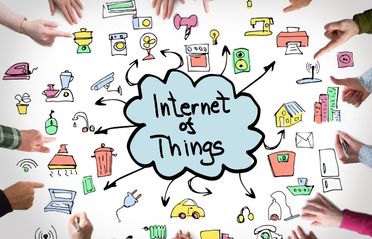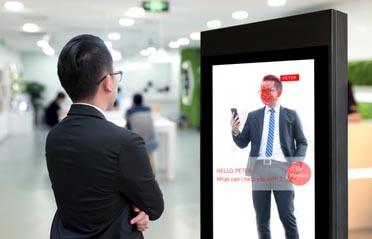According to the World Travel and Tourism Council:
The global Travel Tourism sector grew at 3.9% to contribute a record $8.8 trillion and 319 million jobs to the world economy in 2018. For the eighth consecutive year, this was above the growth rate of world
It is no surprise that as an industry grows steadily, the rise of digital technology both rises and often becomes a catalyst in further grown of that industry. The relationship between digital transformation and growth of this industry is outlined succinctly in Deloitte2019 Travel and Hospitality Outlook for the US market, which summarizes that Cognitive Insight permeates the travel space. Simply put, that means leveraging digital technology to understand the context of service and use it to avoid service disruptions, improve customer personalization and more. Some of the cognitive insight examples sighted in the Deloitte report are:
- Cognitive automation: Processing passports, hotel bookings to reduce human error and improving customer wait times
- Cognitive engagement Leveraging virtual AI agents to engage with customers and providing relevant help quickly avoiding the need for customers to wait in lines
- Redefined guest experience – bringing together multiple big data/AI assets to make every customer feel special
The importance of digital transformation is not just limited to the US (or other Western countries). According to an engaging report by KPMG, the story is no different (rather, further accelerated) in countries like India where digital transformation is fueling rapid growth in the growth if this vertical.
The Key Driver(s)
According to the reports sighted above as well as an ROI study by Adobe for the Travel and Hospitality market, the #1 driver is to improve customer journeys. Which, in layman terms means the following:
- Empower customers to find what they want easily
- Make sure what they buy is really what they would appreciate
- When going through an experience, try and personalize it as much as possible for each individual need
- Let them engage in a way they find the easiest (be it via a device or a person, or a mix)
- Make sure they donot waste time at any point of the journey
- Remember their journeys, what worked, and what did not and make the next journey even better. Three strikes, and you are out, as they say. Rather, in this new era, it is more of you only get one chance.
The Role of Video Analytics in improving Customer Journeys
A lot of the videos as applicable to the Travel and Hospitality Industry articles focus on brand new experiences that are not mainstream today. Most of the focus here is on Augmented, Virtual or Mixed reality. Virtual Reality (VR) primarily focuses on giving potential customers a view of their target destination in the first person. In this use case, they put in specialized VR headsets and they see themselves in target destinations. In other words, this is very similar to the VR gaming industry, just applied to a different end-user experience. Augmented Reality (AR) on the other hand, is becoming more mainstream and is actually offered by many vendors today. For example, Amazon today allows you to shop for items, and then place the item anywhere in your house to see how it would look using your phone camera and AR. Similarly, several fashion brands allow you to try on catalogue items on yourself using AR.
Video Analytics beyond AR/VR: Metrics you can measure
While new potential revenue areas are always exciting, they always come along with a degree of scepticism on how much ROI they can directly bring in. It is a valid argument that many of these enablers help drive and retain customers, but if it is hard to measure, it is hard to justify except for enterprises that pride themselves on being the first to define trends. So let us talk about how Video Analytics can help improve Customer Journeys (which everyone seems to agree is the #1 priority):
- Using video analytics for footfall counting: Footfall counting is a fundamental metric to understand if your location attracts people. It is also a fundamental metric to understand how to manage your customer support staff, and how to schedule their timings and locations to ensure customers don’t have to wait. Traditional technologies involve using IR counters, which are extremely inaccurate. In fact, when we measured our People Insights AI offering with IR counters, we found video analytics-based footfall counting between 5x-20x times more accurate than IR-based systems (watch a video comparing our video AI system with a traditional IR counter here). There are other technologies like using WiFi/Beacon signals, but they all have other limitations (such as the need for apps, OEMs turning off advertisement broadcasts, MAC randomization and others).
- Video analytics to for demographic-based customer journeys: While the traditional footfall counting is a great tool to understand if your site is attracting visitors, it is equally, if not more important, to know if you are ‘attracting the visitors you are targeting. Consider, for example, that you just spent a large amount of money on digital marketing for women in the age range of 20-30, but 70% of your footfall traffic is male and in the 60+ category. Wouldn’t you like to know? This is critical input for you to both better understand who is attracted to your site so you can spend your marketing dollars more effectively as well as organize store layout more effectively so that the target audience can buy more things easily, increasing average basket size. Our Core Image Video Analytics (CIVA) framework allows custom segmentation for such needs and more.
- Video analytics to manage store inventory stocking One of the key issues retailers face today is managing Just in time inventory. If you stock too much, you risk revenue loss (spoiled goods for perishables, overflow stock inventory costs). If you stock too less, customers won’t find what they need and will go elsewhere. Video analytics can easily be used to monitor shelves and quickly make assessments of racks that are emptying sooner than others to alert store managers to re-stock in real-time. In fact, we recently worked with a vendor that builds Electronic Shelf Labels (ESL) to create a system that would monitor shelf labels for fast-moving items via video analytics and then send the ESL id to the inventory manager to get real-time notifications of not just the fact that stock is low, but which product and aisle location.
- Video analytics for workforce optimization – Our People Insights AI accelerator is also used to differentiate between workforce and store customers using advanced algorithms. This is then used to create both customer and workforce heatmaps to compare workforce positioning vs customer density, which is very useful to make sure location managers can optimize both workforce scheduling and positioning. An Asian hotelier recently used this to optimize their customer engagement staff positioning as hotel guests moved from check-in counters to bars/restaurants and shopping boutiques in the hotel to their rooms.
Conclusion:
In this article, we described how video analytics can be used to improve customer journey experiences by offering more context with little to no reliance on customer equipment (such as apps/phones/etc.). There are many other examples of how Video Analytics can improve the overall Travel and Hospitality industry. One key area that we did not discuss in more depth is the important “Safety and Security sub-vertical, which in itself is an important area that advanced video AI algorithms can greatly improve. Let’s leave that for another day and another article.

Product Engineering Services Customized software development services for diverse domains
Quality Assurance End-to-end quality assurance and testing services
Managed Services Achieve scalability, operational efficiency and business continuity
Technology Consulting & Architecture Leverage the extensive knowledge of our Domain Experts



